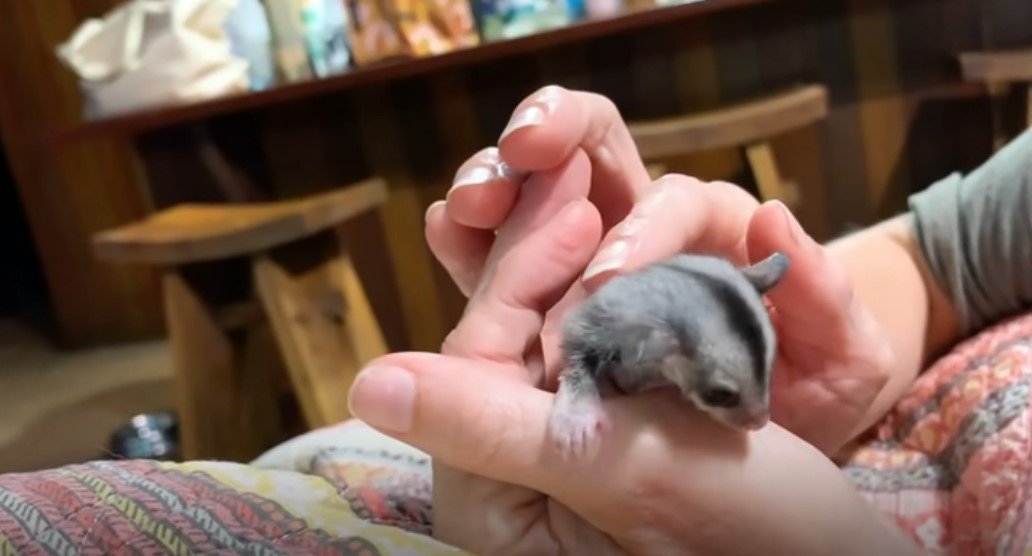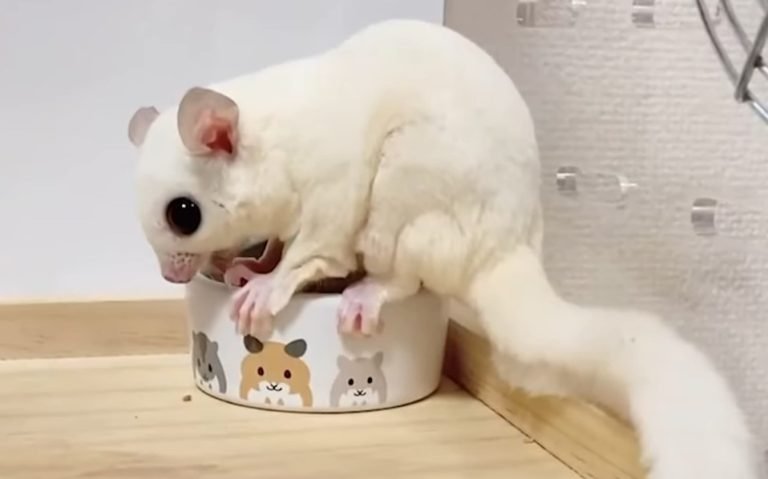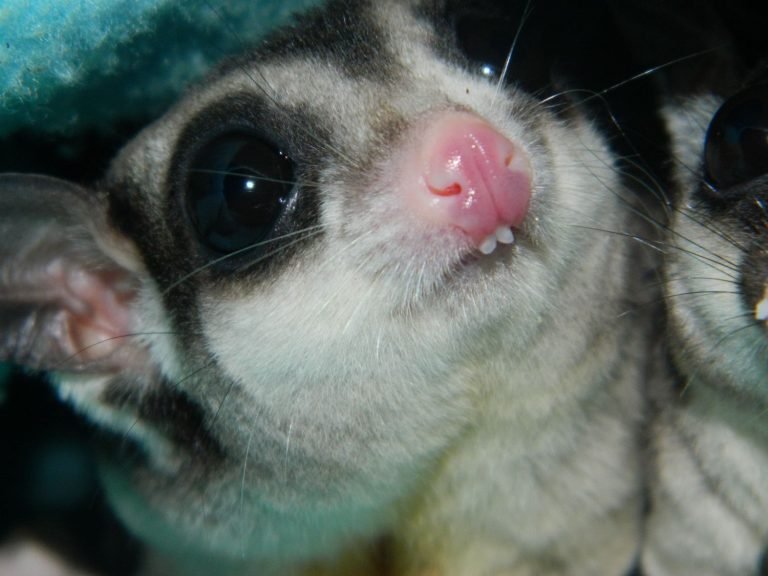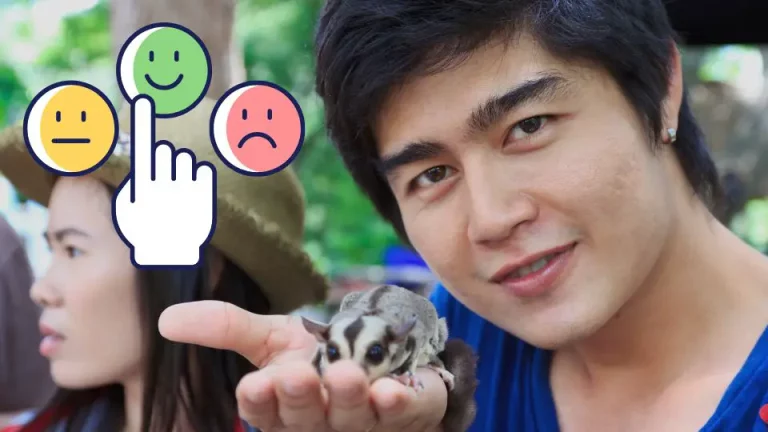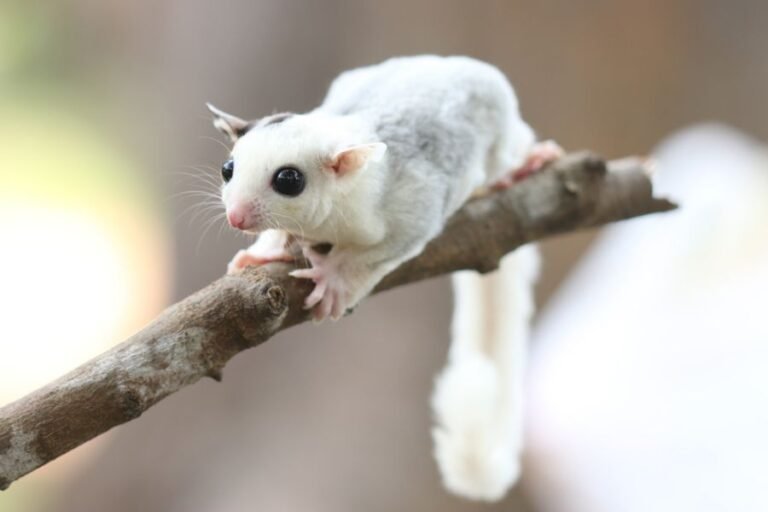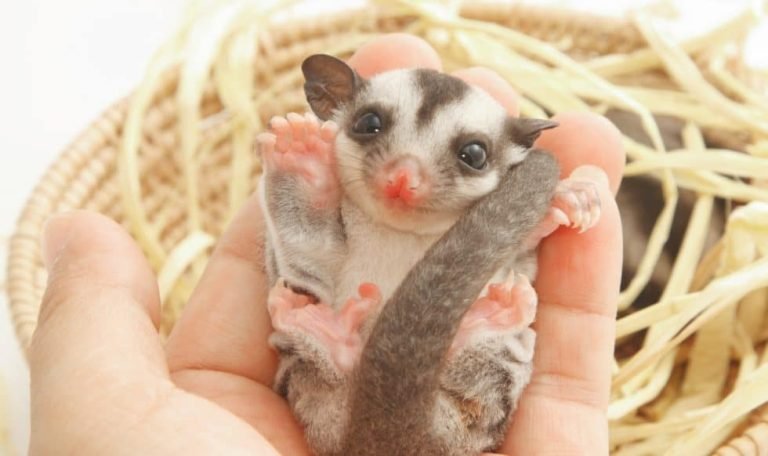How To Pick Up A Sugar Glider Baby
How To Pick Up A Sugar Glider Baby?
Are you ready to embark on the exciting journey of raising a sugar glider baby? These adorable creatures make wonderful pets, but it’s crucial to know how to pick them up and build a strong bond right from the start. Your sugar glider baby’s well-being depends on it.
Proper handling techniques are essential for ensuring your sugar glider baby feels safe and comfortable in your presence. By establishing trust early on, you’ll create a lifelong bond that will bring joy and companionship to both of you.
But why is bonding so important? Well, just like humans, sugar gliders thrive when they feel loved and secure. Building a strong connection with your sugar glider baby not only enhances their overall happiness but also contributes to their mental and emotional health.
So, let’s dive into the world of sugar gliders and discover effective ways to handle and bond with these adorable little creatures. Get ready for an incredible adventure filled with love, trust, and endless cuddles!
Understanding the Gentle Technique for Picking Up a Sugar Glider Baby
Gentle Approach is Key
Using a gentle approach is crucial. These tiny creatures are delicate and can easily become stressed or injured if mishandled. By taking the time to understand the proper technique, you can ensure their safety and well-being.
Proper Body Support
To pick up a sugar glider baby safely, it’s important to support their body properly. Start by placing one hand under their chest and the other under their hindquarters. This way, you provide stability and prevent any accidental falls or slips.
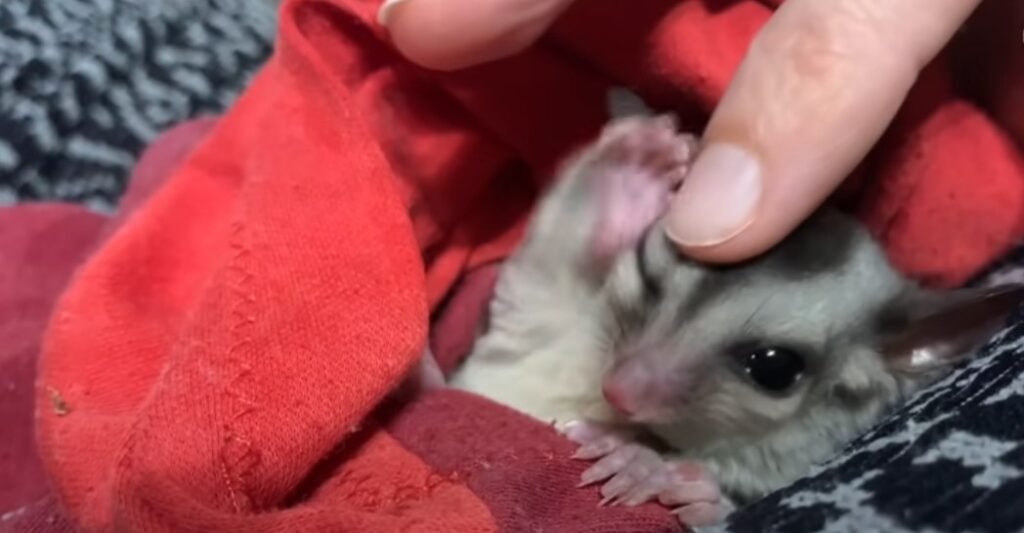
Avoid Tight Grasping
While it might be tempting to grab onto your sugar glider tightly, this should be avoided at all costs. Squeezing them tightly can cause discomfort and potentially harm them. Instead, opt for a gentle grip that allows them to move comfortably while still being secure in your hands.
Take Your Time
Remember, patience is key when handling sugar gliders. They are naturally cautious creatures and may take some time to adjust to being picked up. Approach them slowly and allow them to sniff your hand before attempting to lift them. Rushing the process may only cause unnecessary stress for both you and your furry friend.
Let Them Come to You
In some cases, it’s best to let the sugar glider baby come to you instead of trying to grab them directly. Create an inviting environment by offering treats or placing a small branch near their cage entrance. This encourages them to explore on their terms and build trust with you over time.
Bonding Through Playtime
Picking up a sugar glider baby isn’t just about physical handling; it’s also about bonding through playtime. Spend quality time with your little one by providing toys, climbing structures, and interactive activities that they enjoy. This not only strengthens your relationship but also helps them become more comfortable with human interaction.
Creating a Safe Environment: Tips for Bonding with Your Sugar Glider Baby

Set up an escape-proof area where you can safely interact with your sugar glider baby.
Creating a safe environment is crucial. These tiny creatures are curious and agile, so it’s essential to set up an escape-proof area where you can interact without any worries. Start by designating a small room or section of your home that can be easily secured. Make sure there are no openings or gaps where your sugar glider could squeeze through and potentially escape.
To create a safe space, consider using playpens specifically designed for small animals like sugar gliders. These playpens usually have high walls and secure doors to prevent any accidental escapes. Alternatively, you can use large plastic bins with ventilated lids as temporary enclosures during bonding sessions.
Remove any hazards from the environment that could potentially harm them during bonding sessions.
Sugar gliders are incredibly active and love exploring their surroundings. However, it’s important to remove any potential hazards that could harm them during bonding sessions. Take a thorough look around the designated area and eliminate anything that could pose a danger.
Ensure there are no exposed electrical wires or cables within reach of your sugar glider baby. Cover outlets and secure cords out of their way to prevent chewing accidents or electrocution. Keep toxic plants, chemicals, cleaning supplies, and household items such as sharp objects well out of their reach too.
Be cautious about other pets in the house while interacting with your sugar glider baby. Although some dogs and cats may get along well with these little marsupials, always supervise their interactions closely to avoid any accidents or injuries.
Provide plenty of toys, branches, and climbing opportunities to stimulate their natural instincts.
Sugar gliders have an innate need for mental stimulation and physical exercise. To keep them happy and engaged during bonding sessions, provide plenty of toys, branches, and climbing opportunities.
Familiarizing Your Scent: Building Trust with Your Sugar Glider Baby
Wear your scent, sugar glider baby will be content!
One of the most important steps is familiarizing them with your scent. By doing so, you can build trust and create a strong bond between you and your adorable little friend. Here are some simple yet effective ways to introduce your scent to your sugar glider baby:
- Wear a soft cloth: Before handling your sugar glider baby, take a soft cloth and wear it in your clothing for some time. This allows the cloth to absorb your natural scent, making it more familiar to the baby.
- Transfer your scent: Once you have worn the cloth for a while, gently place it near their sleeping area or inside their pouch. The goal is to gradually introduce them to your scent in a non-threatening way.
- Associate safety and security: As they encounter the scented cloth regularly, they will begin associating your scent with safety and security. This helps in building trust between you and your sugar glider baby.
By following these steps, you can ensure that the process of bonding becomes smoother and more enjoyable for both of you. Remember that patience is key when dealing with new babies like sugar gliders.
A nose for trust: Why scents matter
Sugar gliders have an exceptional sense of smell which plays a crucial role in their lives. They use their noses not only for finding food but also for recognizing their home environment and identifying potential threats or predators.
Introducing them to your unique scent helps them understand that you are part of their safe space. It creates familiarity and reassurance as they associate the comforting aroma with being cared for and loved.
Fruits make friends: Treats that strengthen bonds
In addition to familiarizing them with your scent, offering your sugar glider baby some tasty treats can further strengthen the bond between you.
Supervising Playtime: Ensuring Safety and Positive Experiences for Your Sugar Glider Baby

Always supervise playtime sessions
It’s crucial to always keep a close eye on them. These little creatures are full of energy and curiosity, so accidents can happen if they’re left unattended. By supervising their playtime sessions, you can prevent any potential injuries and ensure that both you and your sugar glider have a positive experience.
Create a secure play area
To provide a safe environment for your sugar glider baby to explore, it’s important to create a designated play area that is free from dangers. Make sure the space is escape-proof by closing all doors and windows. Remove any hazards or toxic items that could harm your little one.
Ensure there are no small gaps or openings where they could get stuck. Sugar gliders are agile climbers, so be mindful of any furniture or structures they could potentially climb onto and fall from.
Engage in interactive play with appropriate toys
Just like human babies, sugar glider babies need stimulation and entertainment during their playtime. Invest in toys specifically designed for sugar gliders to keep them engaged and mentally stimulated.
Some popular toy options for sugar gliders include:
- Hanging pouches or hammocks
- Exercise wheels
- Climbing branches or ropes
- Puzzle toys filled with treats
Rotate the toys regularly to maintain their interest and prevent boredom. Remember, these toys should be safe for them to chew on as well since sugar gliders have sharp teeth.
Check for healthy play behaviors
During playtime, observe your sugar glider baby’s behavior closely. Healthy play behaviors include:
- Bounding: Sugar gliders love to jump around energetically during play.
- Grooming: They may groom themselves or their companions as a sign of bonding.
Veterinary Approved Bonding Techniques: Expert Insights for Strengthening the Bond
Seek advice from a veterinarian experienced in sugar gliders to learn bonding techniques tailored to your specific situation.
Bonding is crucial for establishing a strong and trusting relationship. Seeking guidance from a veterinarian experienced in sugar gliders is essential as they can provide expert insights and techniques tailored to your unique situation. These professionals understand the intricacies of bonding with these adorable creatures and can offer valuable advice on how to proceed.
To begin the bonding process, consult with a vet who specializes in sugar gliders. They will assess the age, temperament, and health of your baby glider before recommending appropriate techniques. This personalized approach ensures that you are equipped with the knowledge and tools necessary for successful bonding.
Consider using positive reinforcement training methods recommended by experts to strengthen the bond with your sugar glider baby.
Positive reinforcement training methods have proven effective in strengthening bonds between humans and animals. Sugar gliders respond well to this approach, making it an ideal technique for building trust and affection with your baby glider.
One key aspect of positive reinforcement training is rewarding desired behaviors. When your sugar glider displays behavior that promotes bonding, such as approaching you or interacting positively, reward them with treats they enjoy. This creates a positive association between their actions and receiving something they love.
In addition to treats, enrichment products can also be used as rewards during training sessions. These could include toys designed specifically for sugar gliders or interactive games that stimulate their natural instincts. By incorporating these elements into your bonding routine, you create an environment that encourages engagement and strengthens the bond between you and your furry friend.
Regularly consult with a veterinarian to ensure you are following proper care and bonding practices.
Bonding with a sugar glider baby requires patience, consistency, and ongoing care.
Mastering the Art of Handling and Bonding with Your Sugar Glider Baby
In conclusion, mastering the art of handling and bonding with your sugar glider baby is crucial for creating a strong and trusting relationship. By understanding the gentle technique for picking up a sugar glider baby, you can ensure their comfort and safety during interactions. Creating a safe environment is essential in building trust, so follow the tips provided to establish a bond with your sugar glider baby.
Familiarizing your scent is another important aspect of bonding. By introducing your scent gradually and allowing them to become familiar with it, you can strengthen the trust between you and your sugar glider baby. Supervising playtime is vital to ensure their safety and provide positive experiences that will further enhance your bond.
To strengthen this bond even further, consider veterinary approved bonding techniques. Expert insights can guide you in developing a deeper connection with your sugar glider baby.
Remember,It’s important to prioritize their well-being. Establishing trust takes time and patience but will ultimately lead to a rewarding relationship filled with love and companionship.
Call-to-action: Start implementing these techniques today to build an unbreakable bond with your sugar glider baby. With dedication and care, you’ll create memories that will last a lifetime.
FAQs
1.How long does it take for a sugar glider baby to bond with its owner?
Bonding time varies from one sugar glider baby to another. It typically takes weeks or even months for them to fully trust their owners.
2.Can I use treats as part of the bonding process?
Yes! Offering treats such as mealworms or fruits during playtime can help reinforce positive associations between you and your sugar glider baby.
3.Is it necessary to consult a veterinarian for bonding advice?
While not mandatory, consulting a veterinarian who specializes in exotic pets can provide valuable insights and guidance on bonding techniques tailored to your sugar glider baby’s needs.
4. What should I do if my sugar glider baby seems scared or aggressive?
If your sugar glider baby exhibits fear or aggression, it’s important to give them space and time to calm down. Avoid forcing interactions and seek professional advice if the behavior persists.
5.Can I bond with multiple sugar glider babies at once?
Yes, it is possible to bond with multiple sugar glider babies simultaneously. However, ensure that each baby receives individual attention and monitor their interactions closely to prevent any conflicts.

